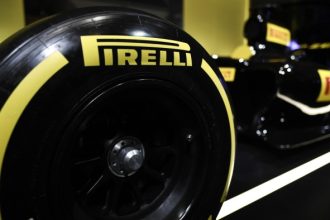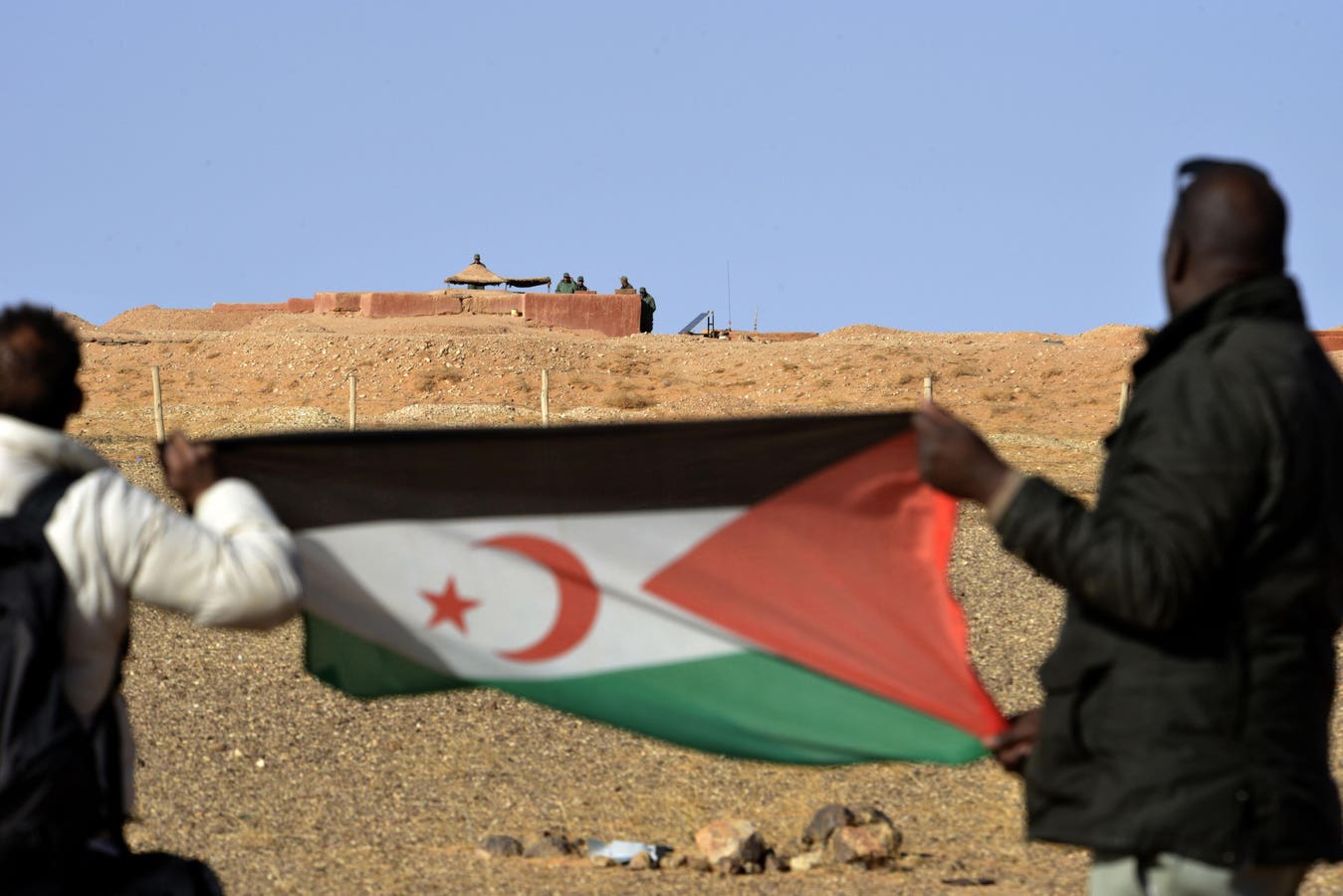We have heard of “wars for oil” and corrupt deals between oil giants and politicians. But could we imagine conflict, human rights abuses, and bribes over some solar panels and wind turbines? It seems it was not the nature of slick crude that corrupted hearts. Morocco’s occupation of the Western Sahara shows that.
Since the 1970s, the Moroccan monarchy has been fighting tooth and nail for a patch of desert, against unreasonable natives wanting self-determination, and against an inhospitable terrain. Surprisingly, it is one with hardly any black gold—TotalEnergies has been looking time and time again, in vain.
In the budget for 2024, Morocco’s government presents gargantuan plans for green energy production. It includes provisions for wind, green hydrogen and ammonia. However, around 81% of the land allocated for such projects will be outside Morocco in territories under military occupation, says the NGO Western Sahara Resource Watch.
Qatargate or Moroccogate?
Just this month Politico’s cover page featured the “Qatargate” scandal: how Qatari and Moroccan lobbyists bribed their way into the European parliament. It was given its name as the public was still centred on the 2022 FIFA World Cup; many missed the part about Rabat’s alleged misdeeds in Brussels.
According to Politico, Belgian and European authorities have created a confusing mess, drawing up arrest warrants and notices to withdraw them. It is now not clear what is the status of Abderrahim Atmoun, Morocco’s ambassador to Poland. He is accused of paying for political campaigns and giving lavish gifts to members of the European Parliament (MEPs), including Pier Antonio Panzeri, Eva Kaili, and others.
There are many reasons why the Moroccan government would have been so aggressive at lobbying in Europe—to the point of allegedly committing illegal activity, including bribes. One key issue has been achieving legitimacy for its illegal occupation of the Western Sahara.
A sparsely populated and largely uninhabitable territory, the Western Sahara was a Spanish colony until as recently as 1976. Moroccan troops now occupy about 70%, and it has sent in civilian settlers to claim the land. The rest is controlled by the Sahrawi liberation organisation, known as the Polisario Front. The occupation is central to the monarchy’s plans for a “Greater Morocco”, uniting the people behind a national, decades-long project—always handy when you have an authoritarian regime. Rabat is also hoping to finally turn the occupation into a profitable one.
Green gold
Morocco has historically suffered an economic disadvantage against its neighbour Algeria: the latter can count on vast reserves of oil and natural gas, in high demand across the Mediterranean, in a resource-hungry Europe. With their high revenues, Algerian rulers could afford to be so haughty as to rebuff tourism, enjoying the highest measure of the “human development index” (HDI) in Africa.
Morocco nonetheless may have a new energy source to lure in Europeans: wind and solar. In 2016, Portugal, Spain, France, and Germany signed a Joint Declaration with Morocco for future cooperation on renewable energy. The government in Madrid has also been upgrading its submarine connection to the Moroccan electrical grid.
There is only a small catch: much of the generation would take place in the Western Sahara, which is under military occupation. The annexation took place between 1976 and 1979 and is considered illegal under international law. The Western Sahara is, according to the United Nations, a “non-self-governing territory going through the process of decolonisation”.
Due to the status of the Western Sahara, the EU has said that it would not import energy from the territory. It is separate from Morocco under international law, and no country officially recognises the occupation as legitimate—though some do in practice. It is not clear how the EU will be able to separate imports from Morocco proper and the occupied territories.
The energy potential of the Western Sahara
What is the potential of the Western Sahara? Until recently, its economic attractiveness relied on the vast phosphate reserves and coasts rich in fish stocks—though they are far from being exploited to their capacity. The Moroccan monarchy is now betting big on renewables, given the potential for wind and solar.
The idea of building solar farms across the Sahara Desert is not novel. In Morocco proper, the Noor Ouarzazate Solar Complex will be the largest concentrated solar plant in the world. However, the most important development will likely be that brought by wind. The territory’s coasts have strong, consistent winds ranging from 7 to 11 meters per second. In Tarfaya, just across the border from the Western Sahara, a 300 MW wind farm is already the largest in Africa.
“The Moroccan monarchy is trying to greenwash its occupation” said Mahfoud Bechri, the coordinator of the Western Sahara is Not for Sale campaign (WSNS). “It is trying to present itself as a leader in the energy transition, but most of its new projects are in the Western Sahara. By involving foreign companies, like Siemens, they are making Europe complicit and creating a sense of normalcy in the occupation.”
“These firms are aware that what they are doing is illegal” argued Bechri, in a phone interview. “European agreements do not extend to the occupied territories, which are separate from Morocco under international law. There is an ongoing conflict, and a peace process, which need to be resolved first and foremost. They never asked the Sahrawi people for consent—which is a necessary legal step. This has been confirmed several times by EU Court of Justice (EUCJ) rulings.”
Now, remember that it is the Moroccan monarchy that is betting big on the occupied territories. The main electricity firm in the country is Nareva, which is wholly owned by Al Mada—formerly known as SNI, the holding company of King Mohammed VI and the Alaouite royal family. The Al Mada conglomerate also holds stakes in all the key industries in the country, such as Attijariwafa Bank, miner Managem, Lafarge Ciments, and the supermarket chain Marjane.
In the occupied territories, Nareva owns all wind farms but one—a privately owned windmill that supplies a cement factory. The projects were presented in 2012, including building three wind farms in Morocco and two in the occupied “southern provinces”. There are two sites in development in the Western Sahara: a 100 MW near Boujdour and a 300 MW in Tiskrad—near the territory’s capital, El Aaiun.
The Western Sahara occupation finally becomes profitable?
Why is the Moroccan monarchy desperate to turn the Western Sahara into a profitable venture? The main reason is to gain legitimacy while offsetting the heavy costs of settlement and, especially, the enormous military expenditure. The Western Sahara’s urban centres largely depend on expensive desalination plants; the territory is ill-fitted to support large populations, while Morocco incentivised its population to move there with tax breaks and free or cheap land.
Half of the active personnel could be deployed around the occupied territories—that would be 200,000 people on payroll. During the 1980s, the Moroccan military built a series of berms: extensive sand ramparts with heavy presence of personnel and surveillance technology. Analysts estimate this structure costs close to $2 million a day to maintain. It is also surrounded by millions of landmines.
The berms were built and are still maintained to prevent raids by the Polisario Front, which effectively prevented the occupation of most of the Western Sahara for years. Sahrawi units are believed to be no more than 20,000 strong, while their equipment is outdated and in ill shape. A Spanish military analyst called Morocco’s strategy “shooting at flies with cannons”.
Moroccan security forces have also been employed extensively across the territory to repress the Saharawi population under occupation. Multiple NGOs and the UN have voiced concerns about systemic human rights abuses in the occupied Western Sahara, including Amnesty International, Human Rights Watch, and the Office of the High Commissioner for Human Rights.
Over the years, reports from these organisations have repeated accusations that Moroccan security forces are committing torture, denying the right to protest and freedom of speech, unfair trials, and other human rights abuses. Not surprisingly, these accusations are not limited to occupied territory; they seem to be a common modus operandi of such units across Morocco, from Tangiers to Rabat to Agadir.
Read the full article here





